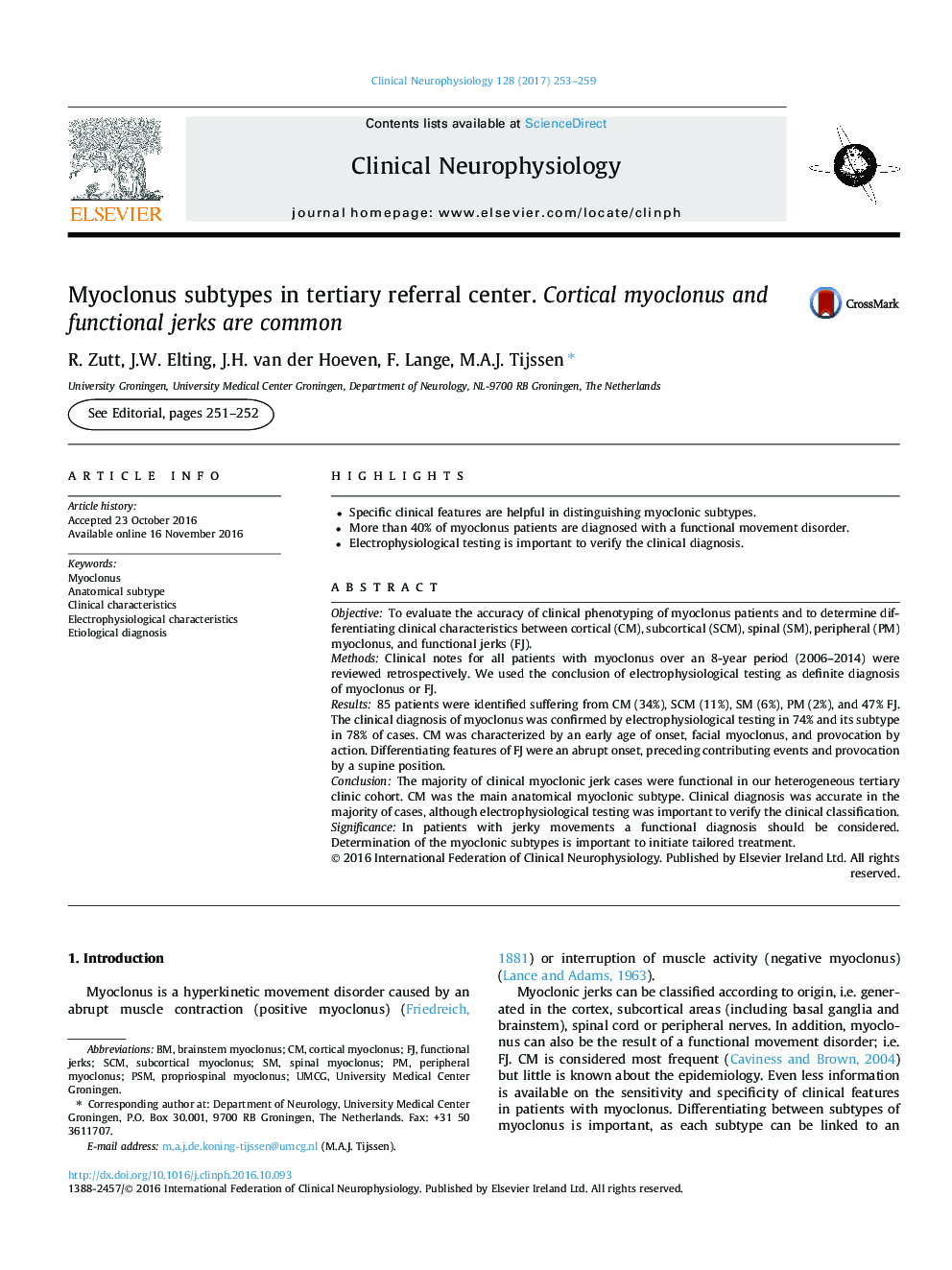| Article ID | Journal | Published Year | Pages | File Type |
|---|---|---|---|---|
| 5627449 | Clinical Neurophysiology | 2017 | 7 Pages |
â¢Specific clinical features are helpful in distinguishing myoclonic subtypes.â¢More than 40% of myoclonus patients are diagnosed with a functional movement disorder.â¢Electrophysiological testing is important to verify the clinical diagnosis.
ObjectiveTo evaluate the accuracy of clinical phenotyping of myoclonus patients and to determine differentiating clinical characteristics between cortical (CM), subcortical (SCM), spinal (SM), peripheral (PM) myoclonus, and functional jerks (FJ).MethodsClinical notes for all patients with myoclonus over an 8-year period (2006-2014) were reviewed retrospectively. We used the conclusion of electrophysiological testing as definite diagnosis of myoclonus or FJ.Results85 patients were identified suffering from CM (34%), SCM (11%), SM (6%), PM (2%), and 47% FJ. The clinical diagnosis of myoclonus was confirmed by electrophysiological testing in 74% and its subtype in 78% of cases. CM was characterized by an early age of onset, facial myoclonus, and provocation by action. Differentiating features of FJ were an abrupt onset, preceding contributing events and provocation by a supine position.ConclusionThe majority of clinical myoclonic jerk cases were functional in our heterogeneous tertiary clinic cohort. CM was the main anatomical myoclonic subtype. Clinical diagnosis was accurate in the majority of cases, although electrophysiological testing was important to verify the clinical classification.SignificanceIn patients with jerky movements a functional diagnosis should be considered. Determination of the myoclonic subtypes is important to initiate tailored treatment.
